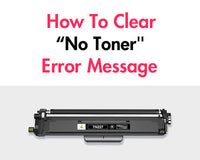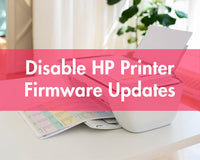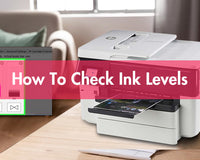Whether you're signing a receipt at a store, labeling a package, or jotting a quick note on a printed label, you may have wondered: Can you actually write on thermal paper? It's a question worth pondering, especially considering that thermal paper feels very different to regular paper. It's smooth, slightly glossy, and reacts to heat in a weird way. In this blog, we'll take a closer look at thermal paper, explore whether you can write on it, and offer some practical advice.
What is Thermal Paper?
To understand whether thermal paper can be written on, it's important to understand how it differs from traditional paper.
Thermal paper is a special, high-quality paper that has a coating that changes color when exposed to heat.
It's used in thermal printers—a device commonly found in credit card terminals, point-of-sale (POS) systems, label printers, and portable receipt printers.
Unlike inkjet or laser printers, thermal printers don't require ink, toner, or ribbons. Instead, they use heat to activate dyes on the surface of the paper to create images or text.
It's this chemical coating that gives thermal paper its smooth texture. When the paper passes over the thermal printer's heating element, the coating reacts, usually turning black in the heated area. Some types of thermal paper can also produce red or blue images, depending on the formulation.

Can You Write on Thermal Paper?
Now to the key question: Can you write on thermal paper?
Yes. You can definitely write on thermal paper, but there are some important things to be aware of. Not all writing instruments are created equally, and some may even damage the surface or fade over time.
Writing Tools That Work Well
- Ballpoint Pens: Ballpoint pens are often the most reliable choice. The oil-based ink in ballpoint pens adheres well to the smooth surface of thermal paper and dries quickly.
- Permanent Markers: Alcohol-based permanent markers like Sharpie work well. They dry quickly and don't smudge easily, making them ideal for labels and receipts that require lasting annotations.
- Fine Tip Felt Markers: Fine-tip felt pens also work well, especially if you apply light pressure. Just make sure the ink adheres to the smooth surface.
Tools That May Not Work
- Gel Pens: These water-based pens sometimes work, but take longer to dry and smudge easily. Results vary by brand and paper coating.
- Pencils: Thermal paper has a smooth surface that doesn’t absorb pencil graphite well, resulting in blurred, easily erasable writing.
- Highlighters and Water-Based Markers: These pens often smudge thermal prints and don’t adhere well to coated surfaces.
So while it is possible to write on thermal paper, the choice of tool is crucial. But writing is not everything, and correct writing is the key to ensuring the durability and readability of the paper.
Best Practices for Writing on Thermal Paper
Whether you're signing a receipt or marking a shipping label, following these best practices can deliver significant results.
- Let Ink Dry Fully
If you use a pen or marker, be sure to give the ink a few extra seconds to dry. This will prevent smudging, especially on smooth surfaces. Quick-drying ink is your friend.
- Avoid Excessive Pressure
Thermal paper is thinner and more fragile than standard paper. Pressing too hard may tear the paper or damage the thermal coating, causing unwanted black marks.
- Keep Away From Heat and Sunlight
Because paper is sensitive to heat, even the hot ambient temperature inside a car can cause the paper to darken and damage printed and handwritten content. Store thermal documents in a cool environment.
- Test First When in Doubt
If you're not sure if your pen or marker will work, test it in a corner or on a scrap of paper before writing anything important.
Common Use Cases for Writing on Thermal Paper
So when and why would you need to write on thermal paper? It's more common than you think.
1. Signing Receipts
When you pay with a credit card at a store or restaurant, the receipt you receive is usually thermal paper. Signing with a ballpoint pen is standard practice and works reliably on this type of paper.
2. Shipping and Mailing Labels
Most major shipping carriers, such as UPS, FedEx, and USPS, use thermal labels. Sometimes you may need to write special instructions or inside notes on a label—using a permanent marker will ensure the notes don't smudge or fade during shipping.
3. Time Stamping or Corrections
If you're manually recording time on a printout, or adding corrections to a printed receipt, clear, permanent handwriting is essential. Again, a ballpoint pen or fine-tipped marker will do the job.
4. Event or Parking Passes
Thermal paper is often used for temporary passes or event tickets. Sometimes you need to write notes or license plate numbers on it, but you should be careful not to affect the thermal printing.
Thermal paper is often used for temporary passes or event tickets. Sometimes you need to write notes or license plate numbers on it, but you should be careful not to affect the thermal printing.

Tips to Make Writing Last Longer
Worried about fading or blurring? Here are some tips for preserving handwritten notes on thermal paper:
- Use Archival-Quality Pens: These pens are durable, typically acid-free and fade-resistant, making them ideal for record-keeping and official documents.
- Avoid Folding or Scratching: Thermal coatings are fragile. Creases can cause printouts and handwriting to break.
- Scan or Photocopy Important Documents: Since thermal paper can darken or fade over time, digitizing important receipts or labels is a smart backup strategy.
- Store in Dark, Cool Areas: Keep thermal documents out of direct sunlight and heat. Consider placing them in an envelope or document sleeve.
These tips are especially helpful for anyone who needs to keep written records or annotated receipts for months or even years.
Alternatives If You Can't Write on Thermal Paper
Sometimes writing directly on thermal paper isn’t ideal—perhaps because the surface is too slippery or you only have water-based pens. In that case, here are some simple solutions:
- Use Adhesive Labels: Place a small, blank label over the thermal area and write on it. This method is especially useful for marking shipments or organizing receipts.
- Write on the Back: Thermal paper usually has an uncoated back, making it easier to write on. But be careful not to apply too much pressure.
- Attach a Secondary Note: Staple or clip a small slip of paper to the thermal paper and write any additional information you need to record.
These solutions help maintain flexibility without sacrificing readability or professionalism.
Conclusion
So, can you write on thermal paper? Yes, and with the right tools and techniques, you can do it well. Whether you're writing quickly on a label, signing a receipt, or making corrections, using the right pen and avoiding heat and pressure are key. Ballpoint pens and permanent markers are the best choices, while gel pens and pencils should generally be avoided.












